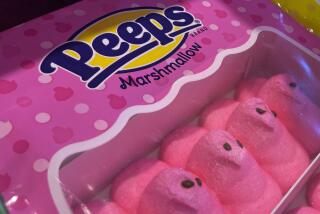FDA says artificial food dyes can’t be blamed for hyperactivity in children, urges further study
After two days of deliberation, an advisory panel has told the Food and Drug Administration that there’s no clear link between artificial food coloring and hyperactivity in children.
But, according to Thursday’s story out of the Tribune Washington Bureau, the panel concluded that further studies are needed to truly settle the question -- and that the dyes may be a problem for children who are more susceptible than others.
The question of food dyes and childhood behavioral problems is an old one, according to this 2008 story by Melinda Fulmer for the Health section:
“Suspicion about the effect of food dyes on behavior swelled in the mid-1970s after San Francisco allergist Dr. Ben Feingold published his book “Why Your Child Is Hyperactive,” detailing his research on the behavioral benefits of eliminating food dyes and additives -- guidelines that became known as the Feingold diet. But a string of studies with poor methodology failed to prove a conclusive link in the following years, and the issue, researchers say, dropped off most people’s radar.”
But the issue hadn’t completely vanished -- just last year, the Center for Science in the Public Interest published a report titled “Food Dyes: A Rainbow of Risks,” detailing the alleged risks of various artificial colorings.
Think more studies are needed, or that the issue should be put to rest? Post your thoughts below.
Follow me on Twitter @LAT_aminakhan.






